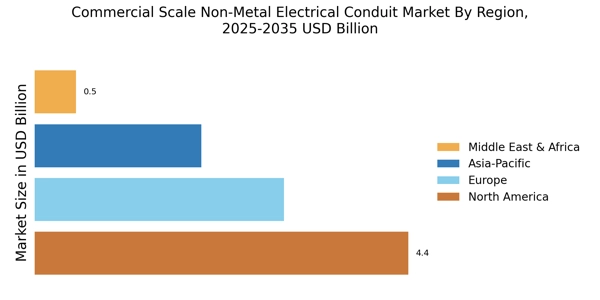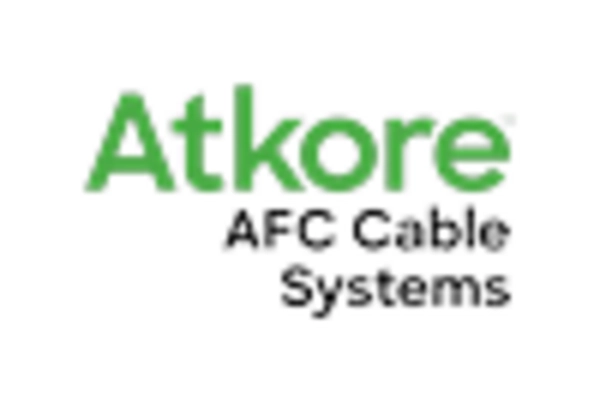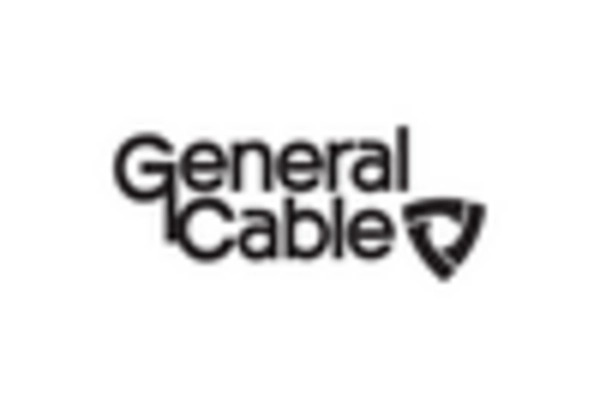Growth in Renewable Energy Projects
The surge in renewable energy projects is anticipated to significantly influence the Commercial Scale Non-Metal Electrical Conduit Market. As countries invest heavily in solar, wind, and other renewable energy sources, the demand for efficient electrical infrastructure is rising. Non-metal conduits, known for their lightweight and corrosion-resistant properties, are particularly suited for these applications. Reports indicate that the renewable energy sector is expected to grow at a compound annual growth rate of 8% over the next decade, which will likely drive the demand for non-metal conduits. This trend suggests that manufacturers who focus on this niche may find substantial opportunities for growth and expansion.
Increased Infrastructure Development
The ongoing infrastructure development initiatives across various regions are likely to propel the Commercial Scale Non-Metal Electrical Conduit Market. Governments are investing in modernizing existing infrastructure and building new facilities, which necessitates the use of reliable electrical conduits. Non-metal conduits, with their advantages in terms of weight and resistance to environmental factors, are becoming a preferred choice among contractors. The infrastructure sector is projected to grow at a rate of approximately 5% annually, driven by urbanization and the need for upgraded electrical systems. This growth is expected to create a robust demand for non-metal conduits, as they are integral to the successful implementation of these large-scale projects.
Rising Demand for Sustainable Solutions
The increasing emphasis on sustainability within the construction and electrical sectors appears to drive the Commercial Scale Non-Metal Electrical Conduit Market. As businesses and consumers alike prioritize eco-friendly materials, non-metal conduits, often made from recycled or recyclable materials, are gaining traction. This shift is evidenced by a reported growth rate of approximately 5% annually in the demand for sustainable electrical solutions. Furthermore, the adoption of non-metal conduits aligns with the broader trend of reducing carbon footprints, which is becoming a critical factor in project planning and execution. Consequently, manufacturers are likely to innovate and expand their product lines to meet this growing demand, thereby enhancing their market presence.
Regulatory Support for Non-Metal Products
The regulatory landscape is increasingly favoring non-metal electrical conduits, which is likely to impact the Commercial Scale Non-Metal Electrical Conduit Market positively. Governments and regulatory bodies are implementing standards that promote the use of non-metal materials due to their safety and environmental benefits. For example, regulations that mandate the use of non-combustible materials in certain applications are pushing contractors to opt for non-metal conduits. This regulatory support is expected to drive market growth, with estimates suggesting a potential increase in market size by 4% as more projects comply with these evolving standards. As a result, manufacturers are encouraged to align their offerings with regulatory requirements to capture this expanding market segment.
Technological Innovations in Manufacturing
Technological advancements in the manufacturing processes of non-metal electrical conduits are likely to bolster the Commercial Scale Non-Metal Electrical Conduit Market. Innovations such as improved extrusion techniques and enhanced material formulations are enabling manufacturers to produce conduits that are not only more durable but also lighter and easier to install. For instance, the introduction of advanced polymer blends has resulted in conduits that exhibit superior resistance to environmental factors, which is crucial for long-term performance. This technological evolution is expected to contribute to a projected market growth of around 6% over the next few years, as contractors and builders increasingly prefer these advanced solutions for their projects.


















Leave a Comment